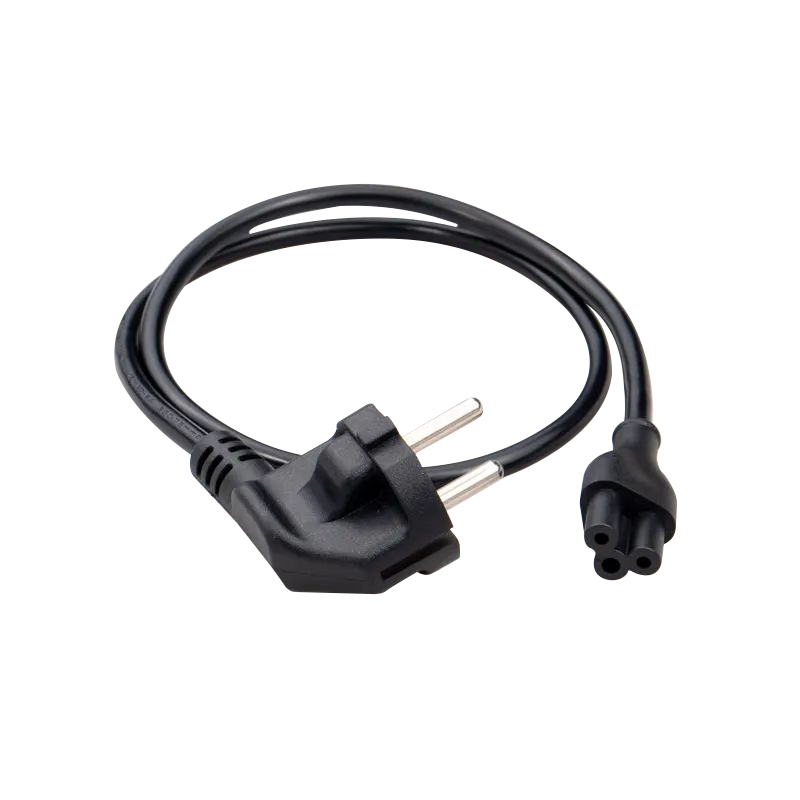To ensure the safety and reliability of power extension cable, the following key features are necessary:
The conductors of power extension cords are usually made of copper wire (or copper-coated aluminum wire) because copper has lower resistance and better conductivity. Copper wire can transmit electricity more efficiently, reduce power loss, and can withstand higher current loads.
The wire diameter of the power extension cord needs to be selected according to the current it needs to carry. A wire diameter that is too small may cause excessive heat when the current passes through, increasing the risk of fire; a wire diameter that is too large may cause unnecessary cost and weight. Common wire diameter standards include 18 AWG, 16 AWG, 14 AWG, etc., and the selection needs to be matched according to the actual load situation.
Some high-quality power extension cords are designed with built-in fuses or overload protection devices, which automatically cut off the circuit when the current is too large to prevent equipment damage or fire. This design can provide additional safety protection in overload situations.
The socket part of the power extension cord is usually equipped with a switch, which can manually cut off the power supply to avoid unnecessary current flow and reduce the risk of overload.
The outer sheath of the power extension cord should be made of high temperature resistant and fire resistant materials (such as PVC, rubber, TPE, etc.) to prevent melting or fire in high temperature environments. Especially for power extension cords that are used for a long time or exposed to the sun, they need to have good heat resistance.
The outer sheath of the extension cord should have anti-ultraviolet and anti-aging properties to ensure that it is not easy to break or deteriorate under long-term exposure to the external environment (such as outdoor, sun exposure, etc.), thereby avoiding electrical safety problems caused by cable aging.
The wires and plugs and sockets of the power extension cord should have high-quality insulation protection to prevent the risk of short circuit or electric shock. Especially at the contact points of the sockets and plugs, high-quality insulating materials need to be used to avoid current leakage.

Plugs and sockets should be designed with protective doors or anti-electric shock designs to prevent electric shock accidents caused by children or accidental touch. For example, many extension cord sockets are designed as jacks with safety doors, and current will only flow when the plug is correctly inserted.
If the power extension cord needs to be used outdoors (such as outdoor activities, construction sites, etc.), it needs to have waterproof and dustproof functions. The plug and socket of the power extension cord should be sealed and have a certain IP rating (such as IP44, IP65, etc.) to ensure that the cable can still work safely in a humid, rainy or dusty environment.
In addition to the waterproof function, the material of the power extension cord should have good UV resistance, cold resistance, heat resistance and other characteristics to adapt to the use under extreme weather conditions and avoid cable aging or performance degradation caused by changes in the external environment.
The outer sheath of the power extension cord should be wear-resistant and able to withstand frequent stretching, bending, friction and other forces. Especially in industrial environments or frequently moving occasions, the extension cord is prone to mechanical damage, and the wear-resistant sheath can effectively increase the service life of the cable.
The power extension cord needs to be designed with a reasonable tensile strength to avoid the internal wire of the cable or the sheath from breaking due to external forces, thereby affecting the safety of use.
When the power extension cord is used under high power load, the wire will generate a certain amount of heat. If the power extension cord does not have a good heat dissipation design, it may cause overheating or even cause a fire. Therefore, when designing, there needs to be appropriate heat dissipation space between the conductor and the sheath of the extension cord to ensure that the heat can be released in time.
Some high-end power extension cords also have built-in overheat protection devices, which automatically cut off the power when the temperature is too high to prevent safety hazards caused by overheating.
For some sensitive devices, the design of the power extension cord also needs to take into account the ability to resist electromagnetic interference (EMI) to ensure that the cable itself does not generate electromagnetic noise, or reduce external interference through appropriate shielding technology.
For higher-power power extension cords (such as industrial cables), a good grounding system should be designed to ensure that the equipment can be safely powered off in the event of a short circuit or electrical failure to prevent electric shock accidents.
In order to ensure the safety and reliability of the power extension cord, the product must have appropriate wire materials, overload protection, high temperature resistance and anti-aging characteristics, good insulation protection, waterproof and dustproof functions, stretch resistance and wear resistance.



 English
English русский
русский















